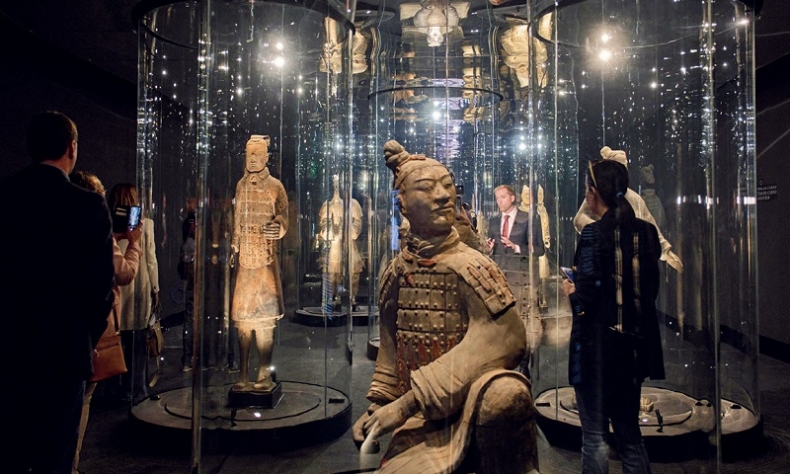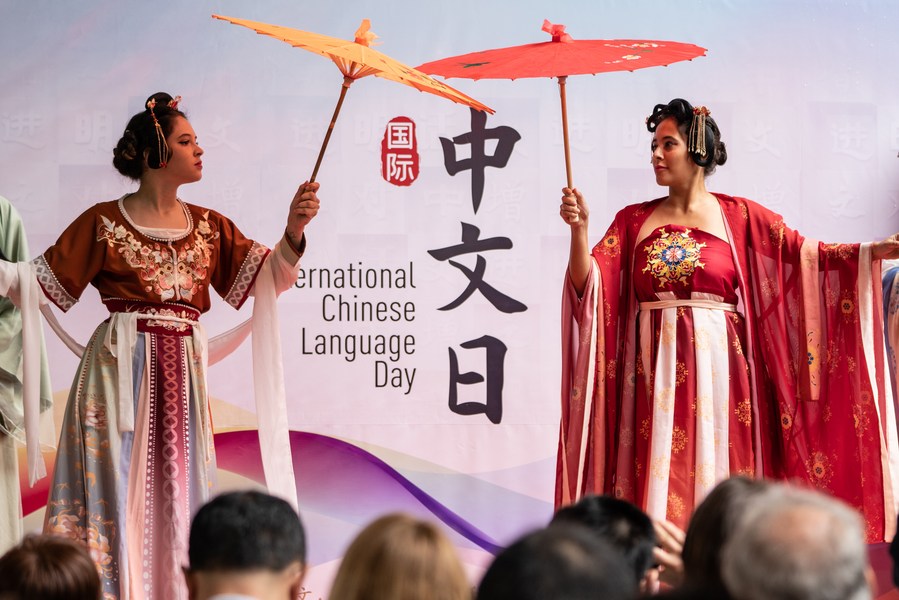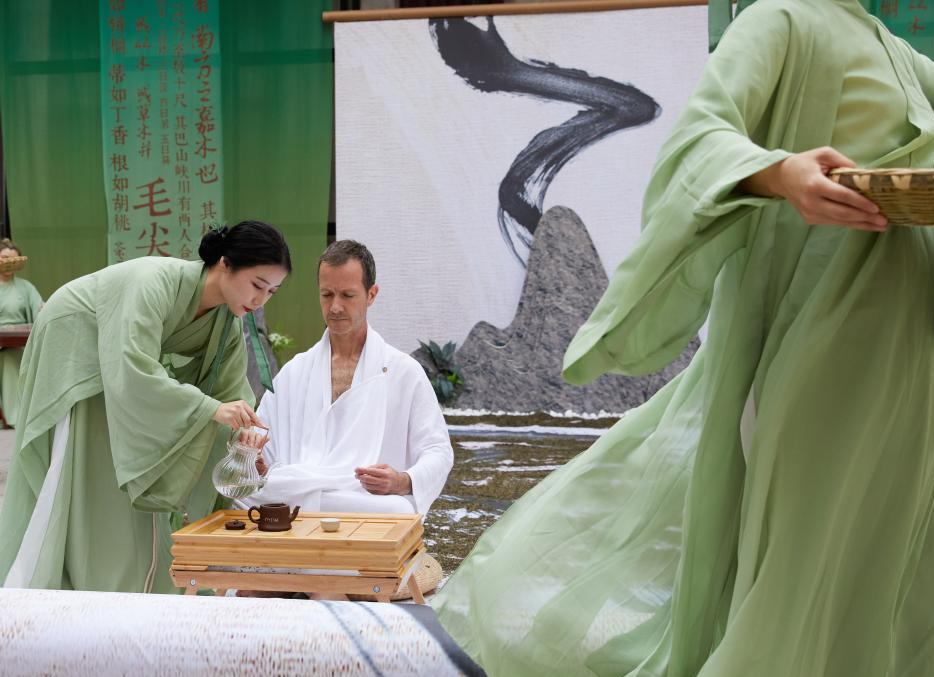Cultural Backbone of the BRI

The ancient Silk Road made indelible contributions to shaping civilizations, catalysing inventions, and engendering literary and scientific treasures in history. Now, the Belt and Road Initiative is infusing new vitality into the ancient cultural exchange tradition.
Chinese President Xi Jinping mentioned Han Dynasty envoy Zhang Qian’s westward journey from Chang’an – today’s Xi’an in China’s northwest Shaanxi Province – around two millennia ago, in his keynote speech on May 19 at the inaugural China-Central Asia Summit. With the mission to open the door to friendship and exchanges between China and countries west of China, Zhang Qian was also featured in Xi’s speech of September 7, 2013, almost 10 years earlier, at Kazakhstan’s Nazarbayev University. Titled, “Promote People-to-People Friendship and Create a Better Future,” it set down some of the basic principles of the Belt and Road Initiative (BRI). What does this reference to such an ancient dignitary signify?
Both speeches resonate throughout Europe today, especially in Spain, the cradle of the Western hemisphere’s second most widely spoken language. On July 1, 2023, Spain assumes presidency of the European Union – a unique political and civilizational union consisting in 24 languages and national traditions. Cultural exchanges have played an important role in advancing progress of civilizations for both the EU region and the world at large, a truism that merits attention in a year marking the BRI’s tenth anniversary and half a century of diplomatic Spain-China relations. Who could forget that 2014, just one year after Xi’s 2013 announcement of the BRI, saw the arrival in Madrid of the first train to run on the Yiwu-Madrid line – which surpasses Russia’s Trans-Siberian Railway as the world’s longest railway link. What ensued, namely, China’s promotion of hundreds of billions dollars’ worth of infrastructure projects and investments along the BRI routes encompassing Eurasia and beyond, is now history.
However, one of the initiative’s prominent elemental achievements also consists in the dynamic cultural interaction, evident in human creativeness, vision, and exchanges that it has generated. The proliferation along the routes both in China and abroad of museums, cultural exhibitions and other activities, where Chinese tourists and high officials rub shoulders, testifies to this effect. It is hence important to reassess the various axial concepts in China’s ancestral and contemporary culture that are mirrored in Europe. They range from, “To prosper you must first build a road,” to “a journey of 10,000 li begins with a single step,” to “Is it not a joy to have friends coming from afar?” as the sagacious Chinese philosopher Confucius is quoted as saying in The Analects of Confucius.

Irina Bokova, former Director-General of UNESCO from 2009 to 2017, has made frequent mention during the past decade of the contributions that the Silk Road has made over millennia to shaping civilizations, catalyzing inventions, fertilizing intellectual scholarship, and engendering literary and scientific treasures, not to mention originating traditions and artistic practices that have been inherited across generations. French President Emmanuel Macron’s meeting with President Xi last April during his state visit to China reminded academics of their previous encounter in 2019, when Macron presented to Xi the original French version of An Introduction to The Analects of Confucius, published in Europe in 1688. Macron remarked on this occasion that such early translations had inspired French thinkers Montesquieu and Voltaire, hence influencing two of the main Western intellectuals engaging in the debate on how best to organize and practice government. The occasion exemplified contemporary two-way Silk Road exchanges.
Governance is an art, as is diplomacy, whether practiced by professional diplomats or scholars. In 1999 and 2000, I had the pleasure of giving lectures to Kazakhstan Diplomatic Academy students on China’s importance to Europe, on the relevance of learning Chinese, and on the foundations of Chinese culture. Kazakhstan having established relations with China, Chinese businessmen and entrepreneurs had a visible presence in Almaty (then Kazakhstan’s capital). But none of my students had yet travelled to their gigantic neighbour. This highly rewarding sojourn made me realize the huge potential of cultural exchanges among countries along the BRI routes and their importance. In hindsight, this experience taught me two things. First, that Chinese modernization has the power, through learning from the past, to transform the present and future, and hence to catalyze dreams, as apparent in the launching of the BRI in September 2013. And second, that diplomatic academies and schools, such as those in Madrid, Rome, and other European capitals, including the UNESCO headquarters in Paris, and those certainly in China, have played a very important role in promoting cultural and people-to-people exchanges.
Like dynamic museums housing books on theory and practices, and professors that promote imaginative strategies for understanding and conflict resolution, the more these institutions successfully encompass past and present, the better able they are to project and plan the future. Nankai University, alma mater of former stateman and founder of China’s modern diplomacy Zhou Enlai, is another example in point. It is indeed imbued with distinctive university traditions that include a vanguardist museum. Culture thus matters. It is no coincidence that Eugenio Bregolat Obiols, honorary professor since 2013 of the Zhou Enlai School of Government of Nankai University in Tianjin, and who set a world record in diplomacy through his three-time ambassadorship to China, is also a man of letters.

Luis Francisco Martínez Montes – probably one of today’s most enlightened European diplomats, currently posted in Brussels – is another distinguished man of letters. He presented last May his recent book, Mundos Illuminados (Illuminated Worlds), a global history of Spain in twelve extraordinary codices, at the Diplomatic School in Madrid. In this and other works the author advocates, in the context of today’s multipolar world, a common present and future narrative between different civilizations in prominent locations of the Chinese and the Hispanic-speaking world.
A revaluation of the role of cultural exchanges certainly leads us to see the role of railway connections through different eyes, particularly the significance of the world’s longest railway link the Yiwu-Madrid line. Bear in mind that the railroad criss-crosses China, Kazakhstan, Russia, Belorus, Poland, Germany, France, and Spain, and that it extends unimpeded to Italy and even Britain, even amid the fierce conflict in Eastern Europe. In November 2018 I was fortunate enough – due to the Yiwu-Madrid line’s fourth anniversary, which coincided with Xi Jinping’s visit to Spain in honor of 45 years of bilateral diplomatic relations – to welcome Zhejiang International University Studies students at the Railroad Museum in Madrid. Bearing the banner “Yixinou. Study Tour, November 2018” (Yixinou refers to the Yiwu-Madrid line) against the backdrop of platforms and tracks displaying old locomotives, Chinese students engaged in lively conversations with local young students, and people from all walks of life, including entrepreneurs. Witnessing history in the making was an emotional moment for me.
It was moreover tangible. Barter, and the multitude of currencies that circulated along the Silk Road, are also being revived in all their relevance under a new guise. This we see in the waning hegemony of the 20th century’s main currency, the dollar, in favor of a return to transactions in various currencies between more countries along the BRI routes. In this respect, museums, wherein art and history coexist, including coins, harbor spaces for dialogue in a world of broader nuances in these multipolar times.
Augusto Soto is director of the Spain-based Dialogue with China Project.
 Facebook
Facebook
 Twitter
Twitter
 Linkedin
Linkedin
 Google +
Google +










